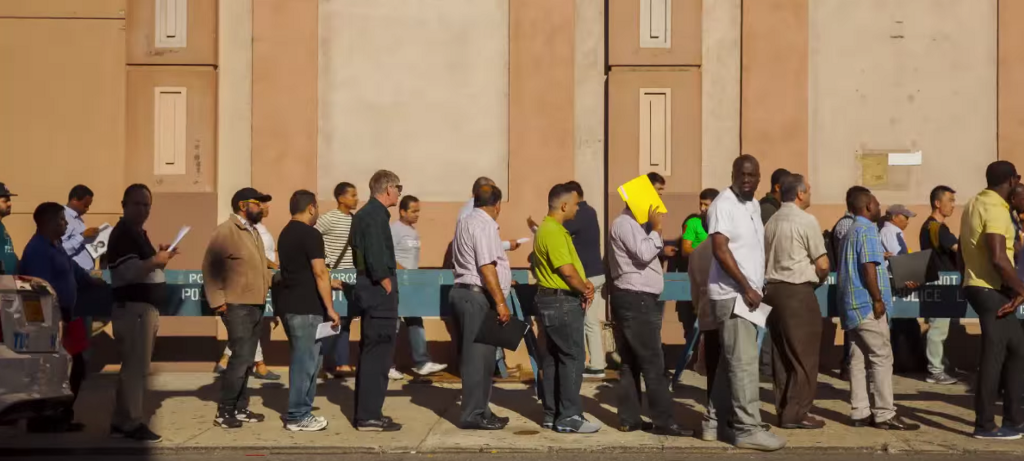Uber, Policy

It’s impressive how deeply determined Bill De Blasio seems in his bid to lose a public relations fight with a company as proudly and constitutionally disingenuous as Uber. His administration has proposed that during a yearlong study of traffic patterns, the number of new for-hire licenses issued to companies with more than five hundred vehicles would be capped at one percent of its current size*; Uber has more than twenty thousand drivers in New York City, meaning it would only be allowed to add around two hundred and forty additional drivers to its own base stations over the next year. The study is necessary, the city claims, because congestion has caused average traffic speeds to fall by nearly ten percent in Manhattan, to 8.5 miles per hour, between 2010 and 2014 — a period during which the number of for-hire vehicles increased by more than sixty percent. (There are, it is worth noting, twice as many Uber vehicles as there are taxi medallions in circulation.)
Uber, which planned to hire at least ten thousand new drivers over the next year, has framed the cap as something that will: destroy ten thousand new jobs, limit transportation options for the working class in outer boroughs, and break the service by making people wait up to half an hour for an Uber. These arguments are all…garbage? What will Uber’s rhetoric about jobs be when its fleet is primarily driverless? An Uber board member recently claimed that it wanted to buy half a million driverless cars from Tesla in 2020 — the electric car company’s entire theoretical output that year — and Travis Kalanick, Uber’s CEO, suggested 2030 as its target date for becoming driverless, a few months before it raided Carnegie Mellon’s National Robotics Engineering Center to staff its Advanced Technology Center, where it is developing its driverless fleet.
Uber may want to be how nurses “get to a night shift in the south Bronx” in the course of displacing public transit, but it’s clear from Uber’s own supsiciously tiny density map that, while “approximately 26% of all Uber rides in 2014 were trips to, from, or within the outer boroughs,” those rides were mostly to, from, or within gentrified Brooklyn and Queens — or to airports. Finally, isn’t the entire point of surge pricing — and UberPool! — to allow Uber to accommodate increased demand with a fixed supply?
A concern about a glut of cars in Manhattan is legitimate enough: The medallion system was designed in the nineteen thirties in response to the flood of drivers pouring into the streets amidst the Great Depression. (A massive, systemic economic downturn that creates an endless supply of underemployed people to drive cars, which results in fare prices being pushed toward zero? Hmm.) So perhaps it would be prudent to study the effects of adding so many cars to the road? And there are real issues to think deeply about with respect to Uber, ranging from labor to what if, in the probable near-future, Uber virtually monopolizes on-demand car service (which is why everyone loathes surge pricing so much, even if they don’t grasp, precisely, why).
Yet the De Blasio administration can neither form a particularly cogent argument about why it must cap Uber’s growth, nor avoid particularly impolitic moves like apparently threatening business groups if they choose to side with Uber on the issue. De Blasio has also taken a lot of money — too much — from the cab industry, whose record on labor is asdjghasgohasg, to the point that it’s difficult for him to even back into coherent argument about what Uber represents as the future of labor. (Which might be on-demand, underemployed non-employees with limited rights and benefits, whose jobs, such as they are, remain largely contingent on automation that has not yet come to pass.) Uber is a symbol of something so much larger that the Times could not resist tallying whether presidential candidates have taken an Uber, and if so, how often.
A quick solution, while the De Blasio administration attempts to formulate a coherent policy rationale, might be to let Uber put its billions where it says it wants to: Go forward with capping new drivers in Manhattan, but allow Uber to add as many drivers as it wants to in the outer boroughs. Much like Boro Taxis, of which there are some twelve thousand in the streets, these drivers would only be allowed to pick up riders while in Brooklyn, Queens, the Bronx, Staten Island or north of 96th Street in Manhattan. Let no driver be turned away, no nurse stymied from taking an Uber to a hospital in the Bronx at two in the morning to help deliver future TaskRabbits. Meanwhile, Manhattanites can afford permanent surge pricing, otherwise they’d live in Queens, right?
*Correction: This post originally stated that the proposed cap would allow Uber to grow one percent per month; the cap would only allow one percent growth during the entire study period, which ends in September 2016. We regret the error!
